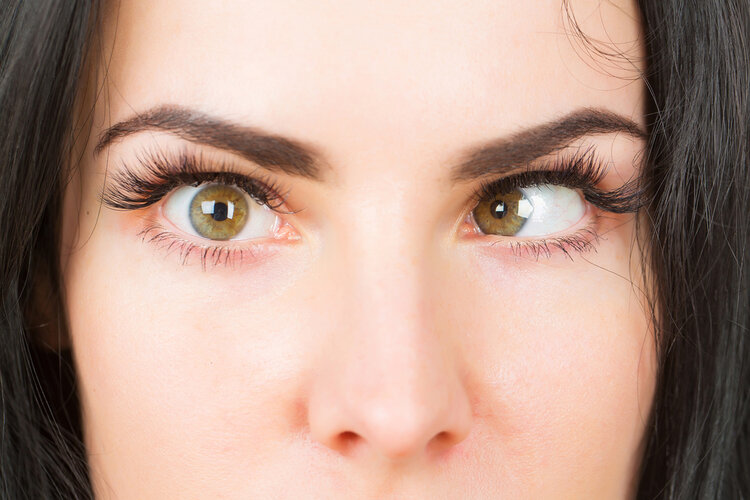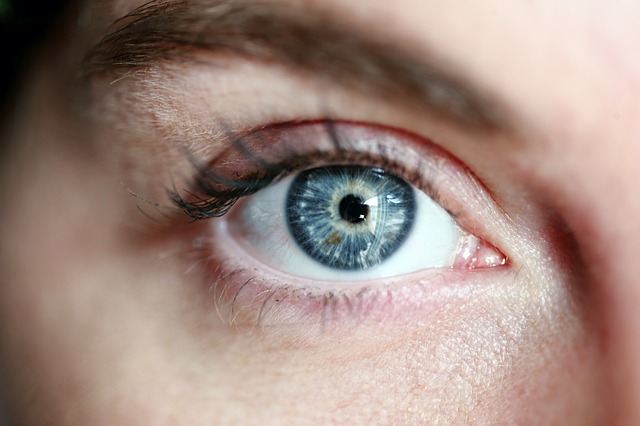Your eyes are one of the most complex parts of your anatomy, with six muscles controlling your eye movement. When you encounter an issue with any of these muscles, you may receive a diagnosis of strabismus. In this blog, we’ll answer the question, “What is strabismus?”.

You’ll recognize the eye disorder in people that are cross-eyed. The condition can impact your level of self-confidence and affect your eyesight. However, there are many ways to treat strabismus.
Eyesurgeryclinics.org provides dozens of blogs per month informing you of different eye conditions and how to treat them. We hope to help people with eyesight issues better understand their eye disorders. Plus, we are a valuable resource for anyone that has an interest in studying the human eye. After reading this article, you can check out some of our other blogs here.
The Meaning of Strabismus
Strabismus is when a person’s eyes are not aligned properly. A person afflicted with strabismus has an eye or eyes that will point in different directions when focusing on an object. It can affect your eyesight in various ways.
If you deal with strabismus from a young age, your brain learns to filter out vision from your affected eye. Because of this, you lose your depth perception, and it can be hard to determine how far away an object is. You also lose your 3-D dimensionality.
If your child has strabismus, make sure that their doctor checks for signs of brain disorders such as cerebral palsy, Down syndrome, and others. But don’t worry—most children with strabismus don’t have these disorders.
Strabismus can affect several generations of your family. If your family has a history of the condition, there is a higher chance you or your offspring may develop it. To get an in-depth eye exam for your child, see a pediatric ophthalmologist.
Alternatively, if you develop strabismus as an adult, you may begin to see double. Your brain’s natural inclination is to read signals from both eyes, and it cannot adjust when one of your eyes turns. Thus, your brain continues to display visuals from both eyes, causing double vision.
Types of Strabismus
There are three types of strabismus. Firstly, we have infantile esotropia. Doctors make this diagnosis when your child is born with crossed eyes.
Another form of strabismus is accommodative esotropia. This disorder affects kids around two years of age. It is when one eye turns inward, causing issues with depth perception.
Lastly, there is exotropia. Exotropia is when an eye turns in the other direction, away from the nose. Despite the type of strabismus you have, the treatments are all similar.
What Causes Strabismus?
To understand what causes strabismus, you must first know that there are six muscles in your eye that control movement. If any of these muscles don’t function, your eyes will suffer.
Strabismus can derive from any issue that affects the muscles in your eyes. If a muscle is too tight or weak, strabismus may present itself. In most cases, strabismus will begin when you are a child.
Note that if your child is born with crossed eyes, it does not mean they have strabismus. Instead, they may have a condition doctors call pseudostrabismus. Your child has a high chance of outgrowing this disorder without medical assistance.
Some issues that may cause strabismus include diabetes and thyroid disease. Also, if you suffered damage after eye surgery, strabismus could be a side effect.
Strabismus Symptoms
If you are unsure if you have strabismus, run some of these self-assessments. The most noticeable symptom of strabismus is the crossing of the eyes. If one of your eyes is facing inward or outward, this is a tell-tale sign of strabismus.
Another sign that you could be developing strabismus is if you feel weakness in one of your eyelids. A symptom many with strabismus note is the feeling that something is pulling their eyelid.
If you experience double vision or trouble reading, these can also be signs that you are developing strabismus. The tricky part about strabismus symptoms is they can come and go. You may write it off as a random occurrence, but you should pay attention to these things. Your optometrist can confirm whether you have an eye condition or not.
How To Treat Strabismus
There are a few different ways to treat strabismus. The good news is most cases of strabismus are curable. Strabismus surgery is a popular treatment method. Eye surgeons can adjust the affected muscles in your eyes to return your crossed eye to normal.
You will likely need more than one procedure to eliminate strabismus. However, it only takes a few days to recover from the operation. Plus, your doctor will use anesthesia during the procedure so that you won’t feel a thing.
Sometimes, certain exercises can help your eyes realign. Doctors recommend these exercises if you have difficulties reading something up close, such as a book or laptop screen.
If you are suffering from double vision, there are unique glasses that could help alleviate your strabismus. Prism glasses help you see a single image by bending light UV rays. Many people rave about the positive results they receive with a prism eyeglass attachment.
While Botox is a cosmetic treatment meant to help aging people look youthful, it also works wonders for people with strabismus. Doctors inject Botox into your eyelid to paralyze the affected muscles.
However, in some cases, the effects of this drug are temporary. Consult your optometrist to find the best treatment method for your strabismus.
Check Out Our Other Blogs
We hope you came away from this blog with a deeper understanding of the effects of strabismus. A vital thing to remember is that strabismus is treatable, and you can live a quality life with the condition.
If you are experiencing vision problems that sound like strabismus, we recommend seeing an optometrist immediately.
Eyesurgeryclinics.org strives to educate people about various eye conditions. Our eyes are one of the most vital parts of the body. But if you have an issue with your eyesight, it should not define you. With proper treatment, many eye conditions are curable. Plus, you can lead a regular life despite any eye condition you have.








